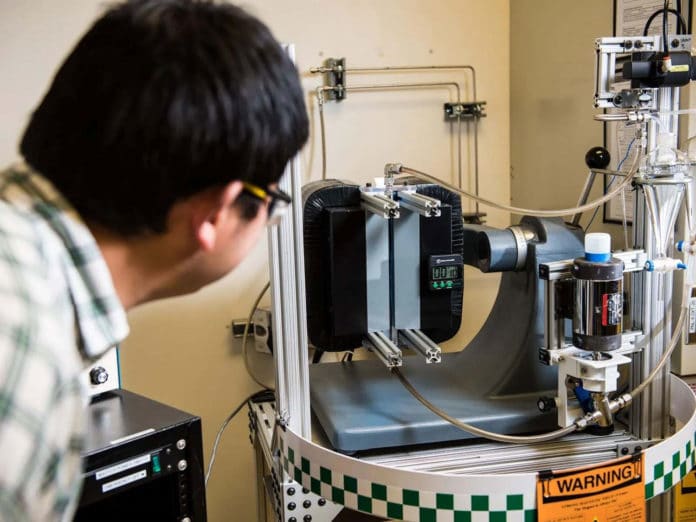Researchers at the Department of Energy’s Pacific Northwest National Laboratory (PNNL) developed a technology that uses magnetic nanoparticles to capture critical materials, such as lithium, from various water sources.
The magnetic nanoparticles are surrounded by an adsorbent shell that latches onto the lithium and other metals found in water associated with various industrial processes. Lithium is found in water from geothermal power plants or in water that is pulled from the subsurface during oil and gas production, so extracting the metal could increase the cost-effectiveness of energy production. Nanoparticles can also be used in desalination plant effluents and even directly from seawater.
Once the tiny, iron-based particles are added to the water, the lithium is drawn out of the water and binds to them. Then with the help of a magnet, the nanoparticles can be collected in just minutes with the lithium hitching a ride, no longer suspended in the liquid and ready for easy extraction. After the lithium is extracted, the recharged nanoparticles can be used again.
This technology offers a promising alternative to conventional extraction methods that pump groundwater into large, costly evaporating ponds. Those processes can take months or even years and impact groundwater management in the arid regions where they are mainly deployed.
If this technology were deployed at geothermal plants, the value of recovered lithium could potentially increase the cost-effectiveness of this form of renewable energy, which uses water to capture the heat deep below the Earth’s surface and then converts it into electricity.
PNNL is further developing this technology in partnership with Moselle Technologies, which has licensed it and plans to plot it in several locations. In addition, scientists are testing in oil and gas fields and are collaborating with other partners to evaluate the commercial use of the technology in Nevada and Canada.
Researchers at PNNL intend to customize the shell of the nanoparticle to specifically target other commercially valuable, strategically important elements and minerals used in energy technologies, medical imaging devices, electronics, and other applications.
PNNL’s novel approach is truly remarkable. It offers the promise of extracting critical minerals in a quick, cost-effective manner. And innovation like this just might be worth its weight in gold.
